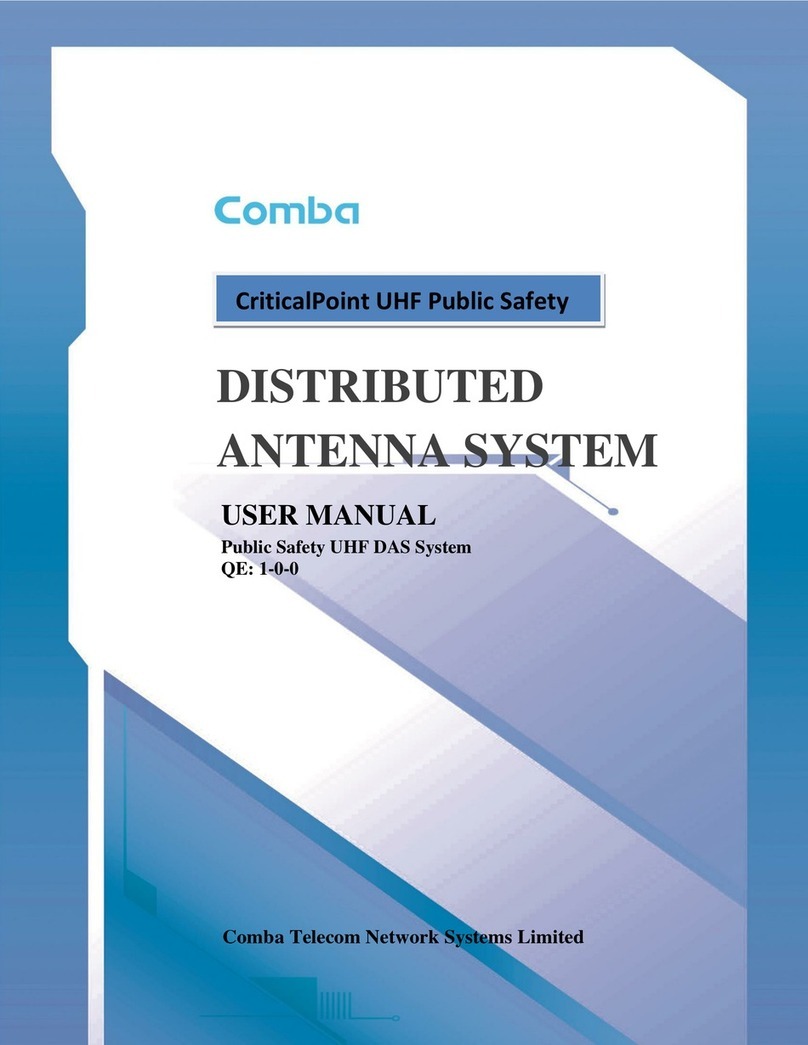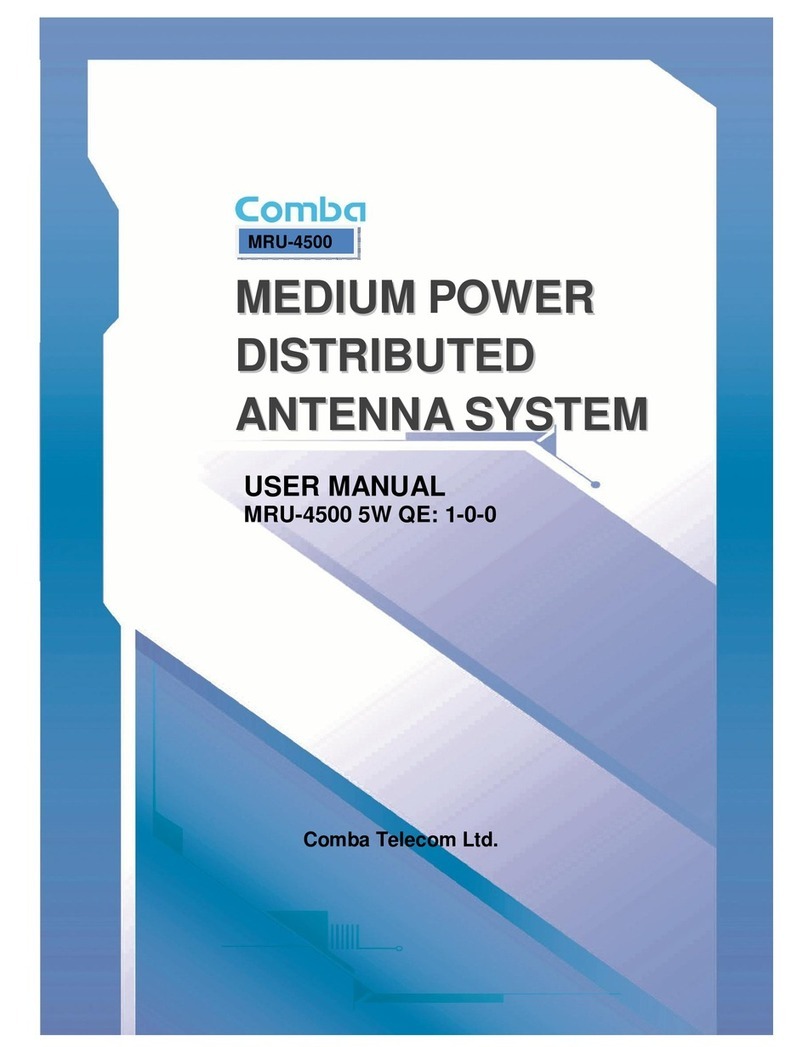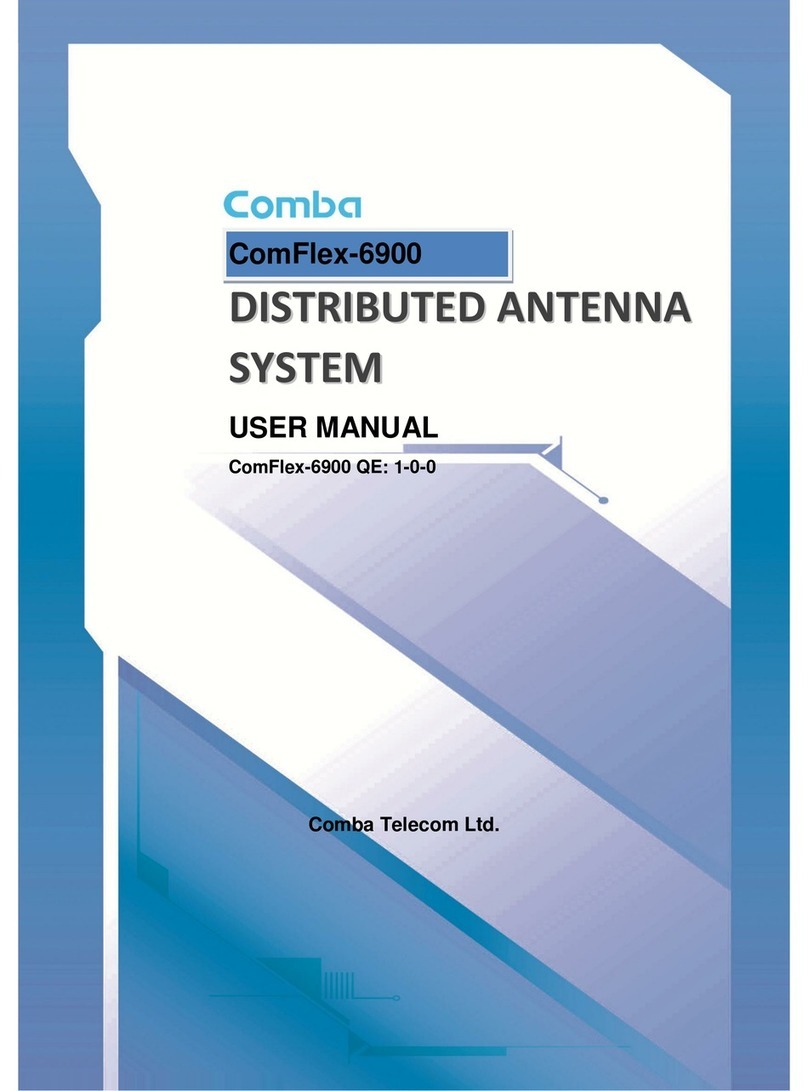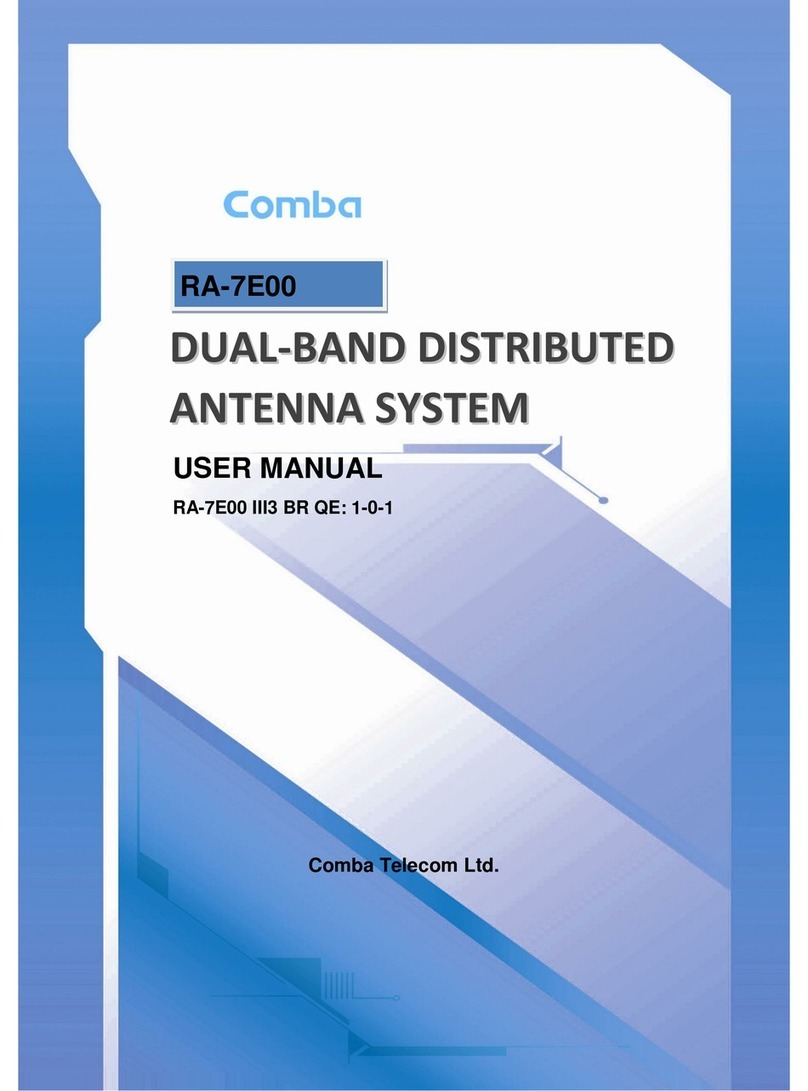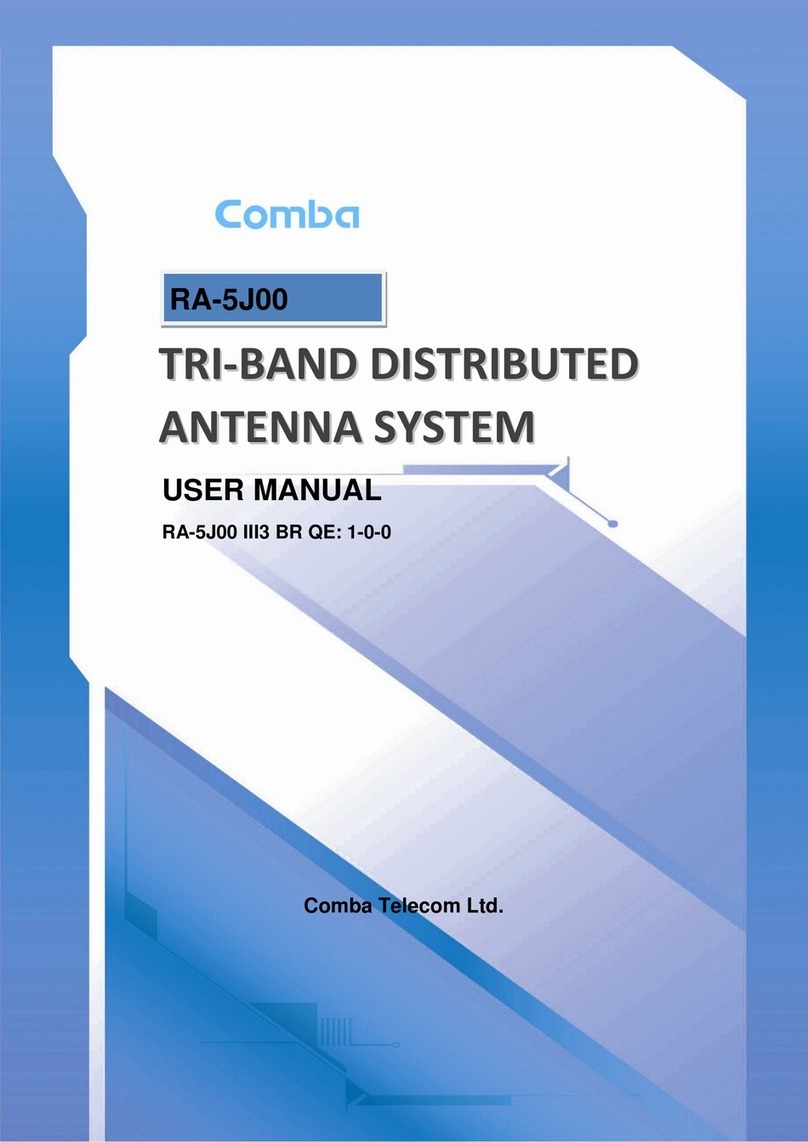
USER MANUAL FOR RA-5300 III3
Copyright - refer to title page
0.2 INDEX TO FIGURES AND TABLES
Figure 1: MU Enclosure ...........................................................................................................................................11
Figure 2: Optical unit Enclosure..............................................................................................................................11
Figure 3: Duplexer Unit Enclosure..........................................................................................................................11
Figure 4: Front, Side and Bottom Views of RA-5300 RU Enclosure..................................................................12
Figure 5: System Diagram.......................................................................................................................................13
Figure 6: Application of one MU with 8 RUs..........................................................................................................14
Figure 7: MU Modular Design .................................................................................................................................14
Figure 8: RU Layout Diagram..................................................................................................................................15
Figure 9: MU Carbinet Mounting.............................................................................................................................20
Figure 10: Mounting Rack........................................................................................................................................21
Figure 11: Angle Iron or Laminate Installation......................................................................................................21
Figure 12: MU Installation........................................................................................................................................22
Figure 13: Fix the Enclosure....................................................................................................................................22
Figure 14: Finish Installaiton....................................................................................................................................23
Figure 15: Box Wrench (10# is a must).................................................................................................................23
Figure 16: Allen Wrench (6# is a must) .................................................................................................................24
Figure 17: Adjustable Wrench.................................................................................................................................24
Figure 18: Electric Drill.............................................................................................................................................24
Figure 19: Fix the Mounting Bracket on the Wall................................................................................................25
Figure 20: Detailed View of Wall Mounting (upper part).....................................................................................26
Figure 21: Detailed View of Wall Mounting (lower part).....................................................................................26
Figure 22: Pylons Screw.........................................................................................................................................27
Figure 23: Hang the Enclosure on the Mounting Bracket ..................................................................................27
Figure 24: Tighten Two Scews on the Top of the Enclosure.............................................................................28
Figure 25: Tighten Two Scews on the Bottom of the Enclosure.......................................................................28
Figure 26: Finish Installation....................................................................................................................................29
Figure 27: Box Wrench (10# is a must).................................................................................................................29
Figure 28: Allen Wrench (6# is a must) .................................................................................................................30
Figure 29: Adjustable Wrench.................................................................................................................................30
Figure 30: Electric Drill.............................................................................................................................................30
Figure 31: Install Mounting Bracket on the Pole..................................................................................................32
Figure 32: Hose Clamp Diagram............................................................................................................................32
Figure 33: Open the Hose Clamp...........................................................................................................................33
Figure 34: Make the Zone Circle GoThrough the First Squre Hole of the Mounting Bracket and Fix it on the
Pole.....................................................................................................................................................................33
Figure 35: Move The Mounting Bracket to a Suitable High, Insert the Zone Circle to the Shell and
Clockwise Rotate the Screw toTighten the Circle by 10# box wrench. .....................................................34
Figure 36: Rotoate the Screw till Mounting Bracket Fixed On the Pole ............................................................34
Figure 37: Pylons Screw.........................................................................................................................................35
Figure 38: Unit Installed in Mounting Bracket ......................................................................................................35
Figure 39: Tighten Two Scews on the Top of the RU.........................................................................................36
Figure 40: Tighten Two Scews on the Bottom of the RU...................................................................................36
Figure 41: MU Front Panel Connectors.................................................................................................................37
Figure 42: Rear Panel Connectors A92.................................................................................................................37
Figure 43: MU Rear Panel Connectors A48..........................................................................................................37
Figure 44: RU Connectors.......................................................................................................................................38
Figure 45: MU connect with BTS............................................................................................................................39
Figure 46: Fibre Optic Port Connection Diagram .................................................................................................40
Figure 47: MU connect with RU..............................................................................................................................40
Figure 48: Pins Allocation for “EXT_ALM” Port for RU........................................................................................41
Figure 49: Pins Allocation for “BTS_ALM” Port ....................................................................................................41
Figure 50: PC Protocol Setting................................................................................................................................44
Figure 51: Connection Type ....................................................................................................................................45












